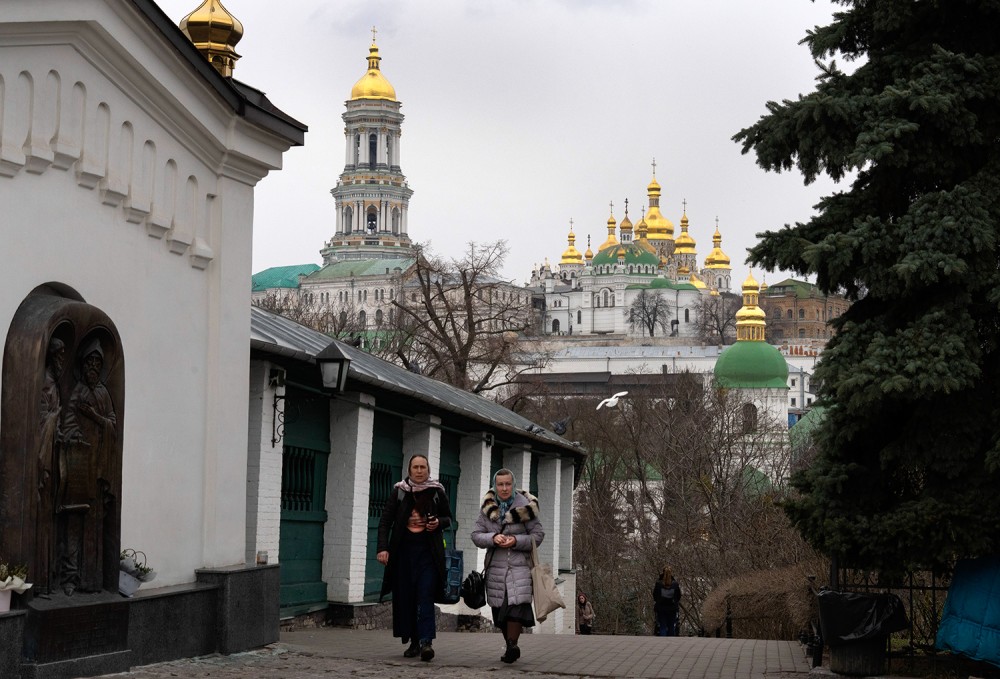Rival Orthodoxies in Ukraine
The war is revealing divisions among Christians in the region—and deepening them.

People walk in the Monastery of the Caves, also known as Kyiv Pechersk Lavra, one of the holiest sites of Eastern Orthodox Christians, in Kyiv, Ukraine, on March 23. (AP Photo / Efrem Lukatsky)
Despite the threat of Russian bombardment, Orthodox believers in Ukraine gathered to celebrate Pascha, the high point of the church year. On April 16, a few minutes after midnight, they quietly left the darkened naves of their churches and made a procession, candles in hand, around the churches’ outer walls.
Believers also gathered in Kyiv at Ukraine’s oldest monastery, the Monastery of the Caves, designated as a lavra, a major monastery. Normally, the acting head of the lavra, Metropolitan Pavel, would have led the service, but this year he was under house arrest.
A few days earlier, Ukrainian officials had accused Pavel of violating Ukrainian law by justifying the Russian invasion of Ukraine and stoking hatred against other religious groups in Ukraine. Metropolitan Onuphry, head of the Ukrainian Orthodox Church and the hierarch to whom Pavel reports, served in his place.





